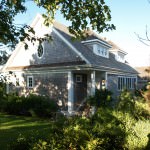Great July market review from The Globe’s Chris Reidy below…
By Chris Reidy
| GLOBE STAFF AUGUST 29, 2013
The number of Massachusetts single-family homes sold in July was up more than 18 percent on a year-to-year comparison basis as the Bay State had its best month for sales volume since June 2006, the Warren Group said Thursday.
Condominium sales in the state were also up sharply. Meanwhile, the median price of a single-family home rose 10 percent in July, increasing to $349,000, said the Warren Group, a Boston company that tracks local real estate activity.
“Many recent real estate reports have signaled a strong real estate recovery, and our numbers speak to that rebound,” David Harris, editorial director of the Warren Group, said in a statement. “While consumer confidence and strong employment numbers continue to bolster the market, there’s concern that higher mortgage rates and increasing home prices could dampen the revitalized market.”
Last month, 5,941 single-family homes were sold statewide sold, up from 5,014 sold during July 2012, the Warren Group said.
As for condos, 2,336 were sold in the state during July, up nearly 17 percent from the same month a year ago.
July’s median selling price for a Massachusetts condo was $310,000, up 5.5 percent from July 2012.
The Massachusetts Association of Realtors also issued its monthly report on the local housing market Thursday. The association uses a different method than the Warren Group does to calculate sales activity.
According to the association, there were 5,750 detached single-family homes sold this July, a 20.3 percent increase from a year ago. The July 2013 total was the most homes sold in one month since July 2004.
In a statement, association president Kimberly Allard-Moccia said: “The combination of buyers wanting to close and move in before the start of the school year and their concern over increasing interest rates resulted in another positive month in July. Hopefully the activity of the past few months will encourage homeowners who are thinking about selling to put their homes on the market. Buyer demand is there, but the shortage of inventory often prices buyers out of the market.”
Chris Reidy can be reached at [email protected].








